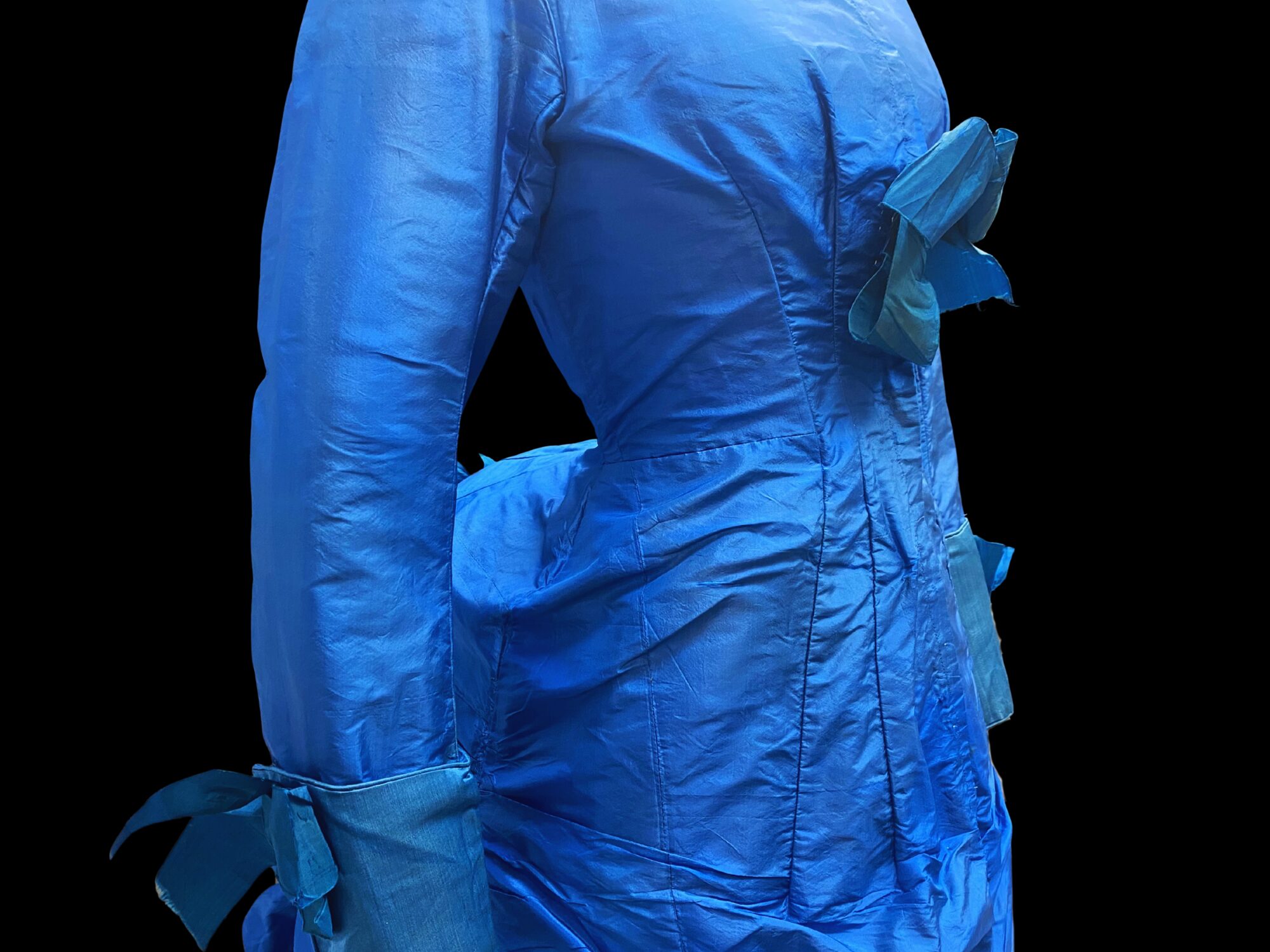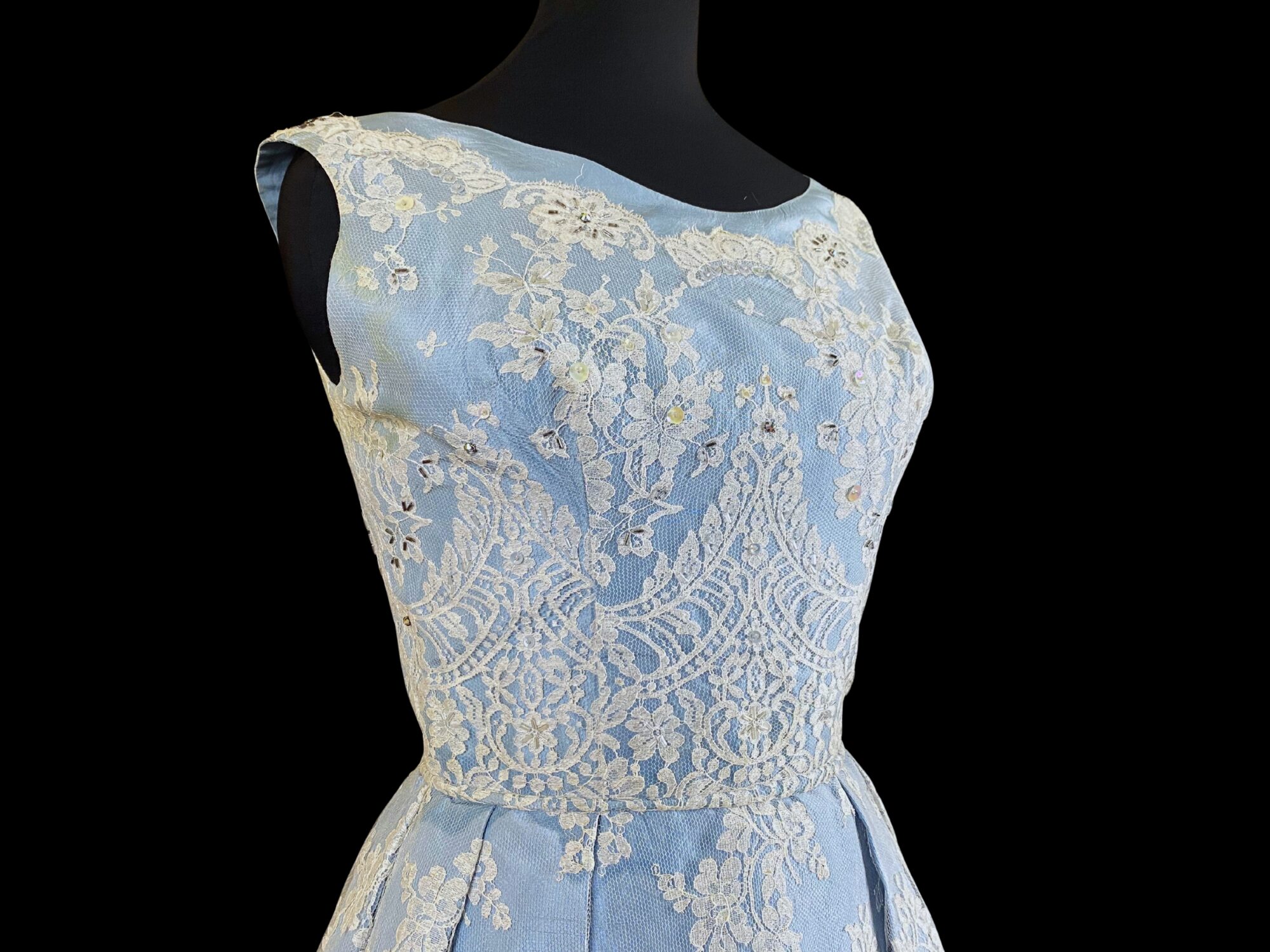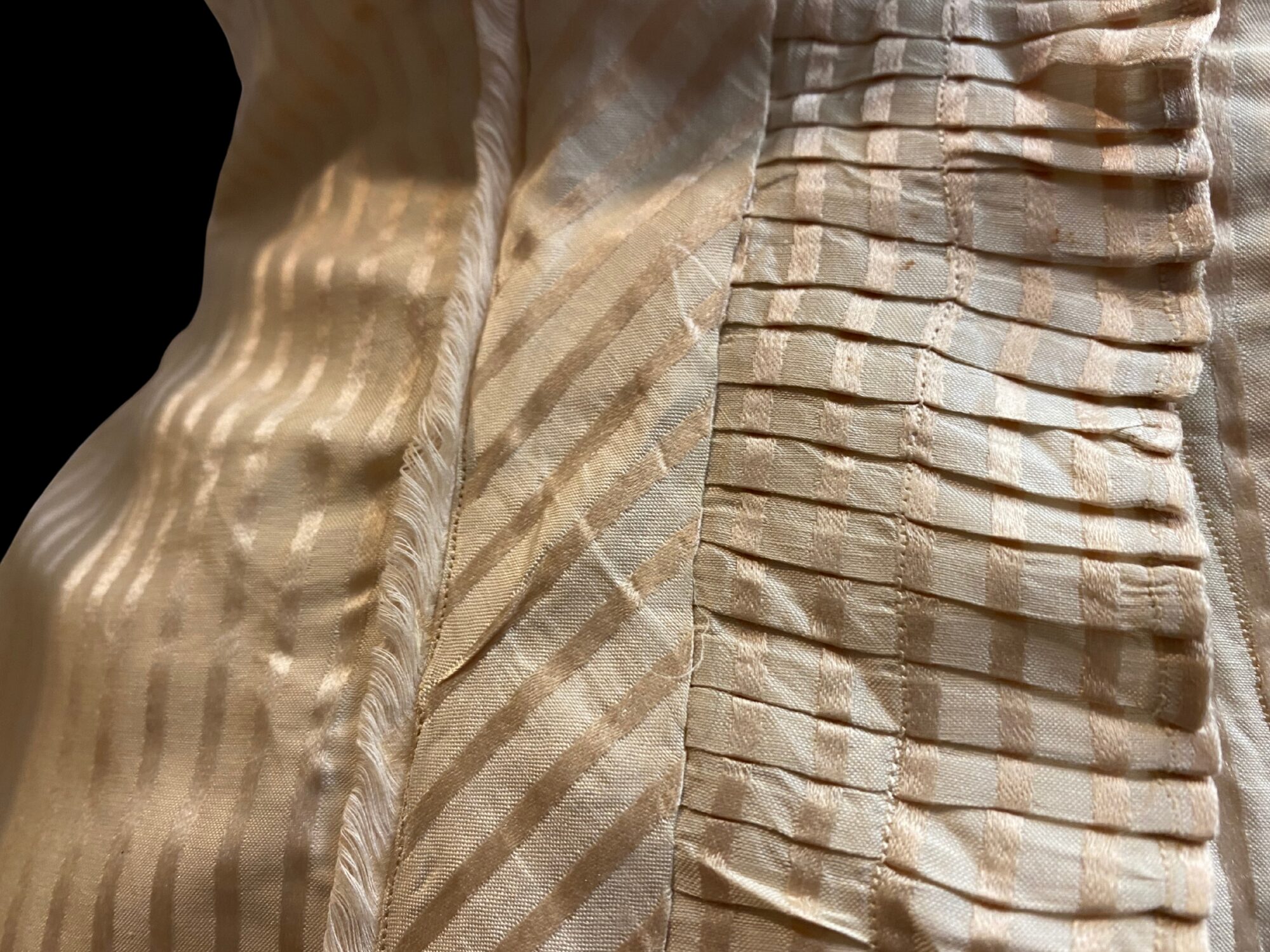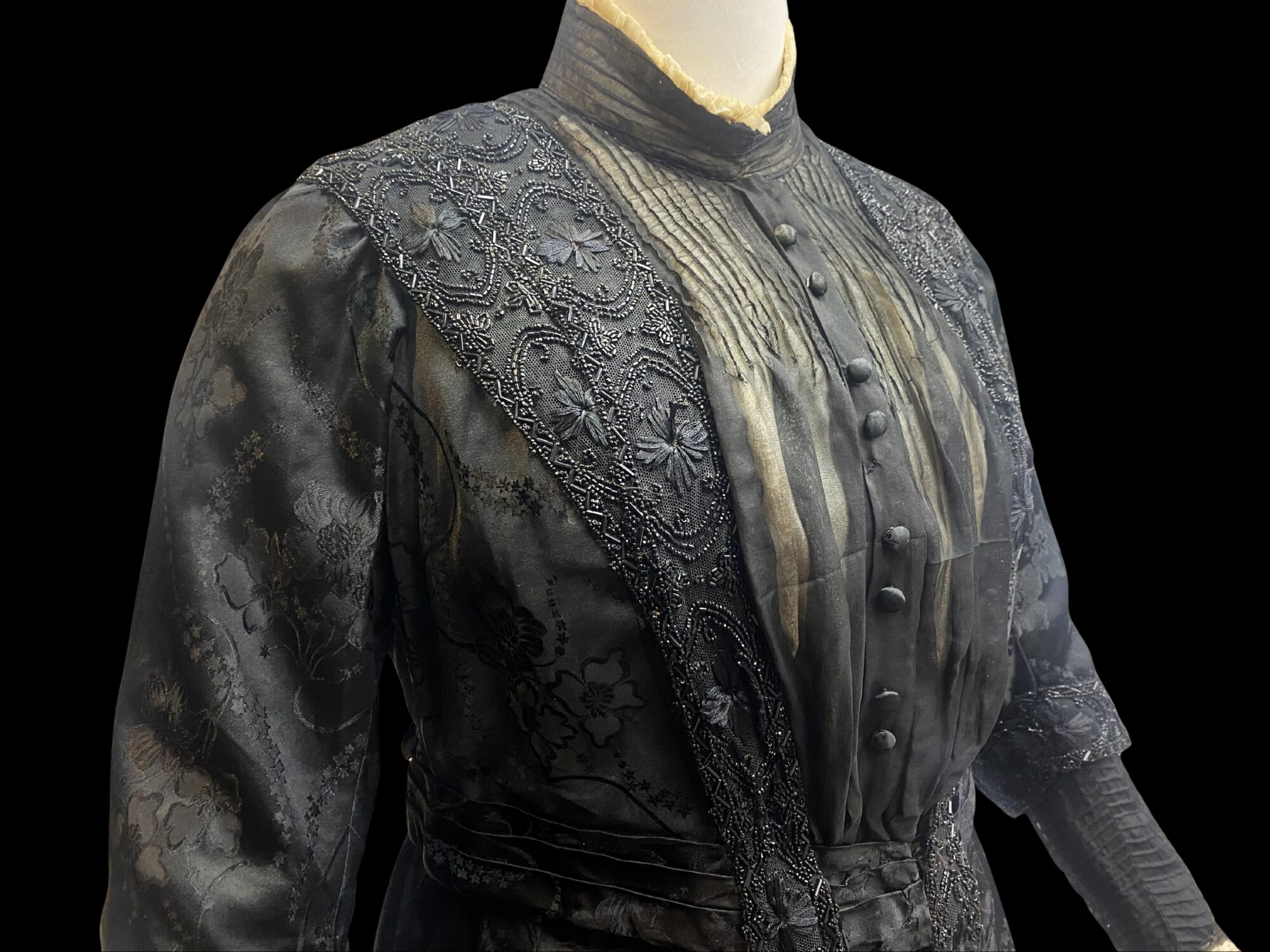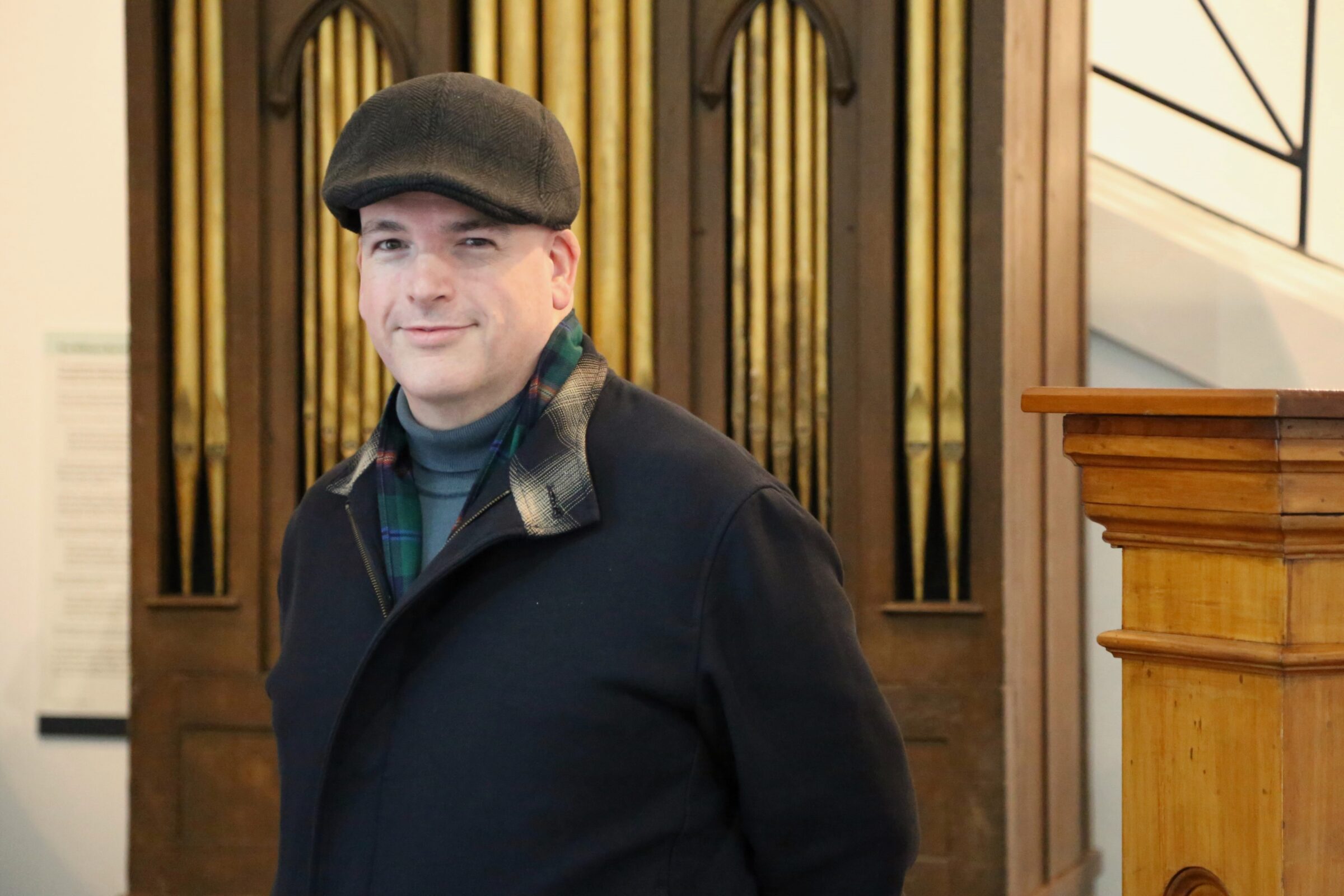Collection Stories
This stately evening gown is made of silver patterned lamé. Pleated on both bodice and skirt, the gown also has a round yoke with a scalloped top edge, a distinctive centre back opening with five covered buttons and fabric loops and a waistband. The elbow length sleeves are puffed. The gown comes with lamé evening gloves and a small beaded evening purse.
Mary Green Williams made and wore this evening gown in the early 1930s. It was made glamorous by its fabric and styling but is never-the-less understated and feminine and would have been in line with the modest evening wear worn in this era by Queen Mary, consort of King George V. Mary Williams was born just a year after Queen Mary and would have been in her early 60s when she wore the gown.
The fabric in the gown changes colour in different lights – at times it seems more gold than silver – and this is what lends elegance and chic to the gown.
Lamé is a fabric either entirely made of or incorporating metallic fibres. Some of the oldest Assyrian records describe a fabric made from gold or silver. Lamé is made by winding metal strips around a single non-metallic thread, then woven with a warp or weft with more non-metallic thread. This sort of fabric was in existence around 4,000 years. It was, at that time, the exclusive province of royalty. Lamé later became popular for the crowned heads and princes of the Church in Europe. It became known as ‘cloth of gold’ because of its use of gold fibre and its resemblance to gold jewellery or gold coins.
Lamé became popular for a different clientele during the 1920s when fashions lent themselves to bright fabrics with some weight and movement in them. The 1950s and 1960s saw another revival when film stars like Marilyn Monroe and Jane Russell, and musicians like Elvis Presley and Liberace, wore sophisticated lamé outfits.
Lamé fabric is now widely available. If precious metals are used, the fabric is very expensive, as you’d expect. These days, genuine and imitation lamé are commonly used in couturier clothing, usually made of natural materials like silk, viscose, cotton or wool or synthetic fibres like polyester, polyamide and nylon. Metallic fibres are for exclusive clothing while metal coated plastic is used for less expensive garments. Synthetic fibres are much lighter than metallic, easier to care for and easier to sew.
Mary Green Williams was a member of the well-known Whanganui family of J Williams Jewellers, situated in lower Victoria Avenue. She was a great aunt of the donor, Wanda Williams, who took over the jewellery shop from her father Joe Williams in 1952 and worked there until her retirement in 1991. ‘Aunt Mary’ was born in 1868 and lived in Napier. One of eight siblings, she never married and her lamé evening gown came to Wanda, who later donated it to the Museum. Mary Green Williams died in Napier in 1953.
By Libby Sharpe, Pou Tiaki/Senior Curator at Whanganui Regional Museum at the time of writing.
Image: Mary Williams’ silver lamé evening gown
Photographed by Kathy Greensides
WRM 1991.55.1
View the full-length image.


